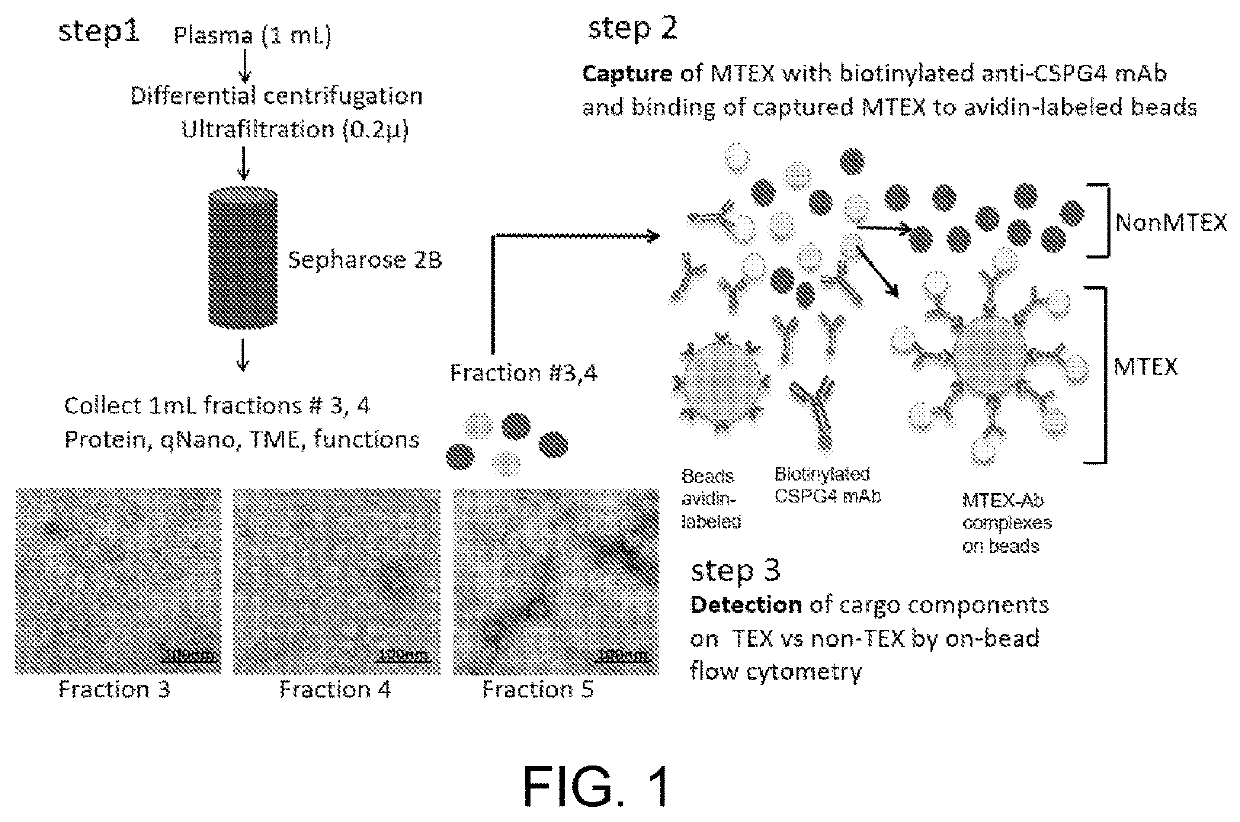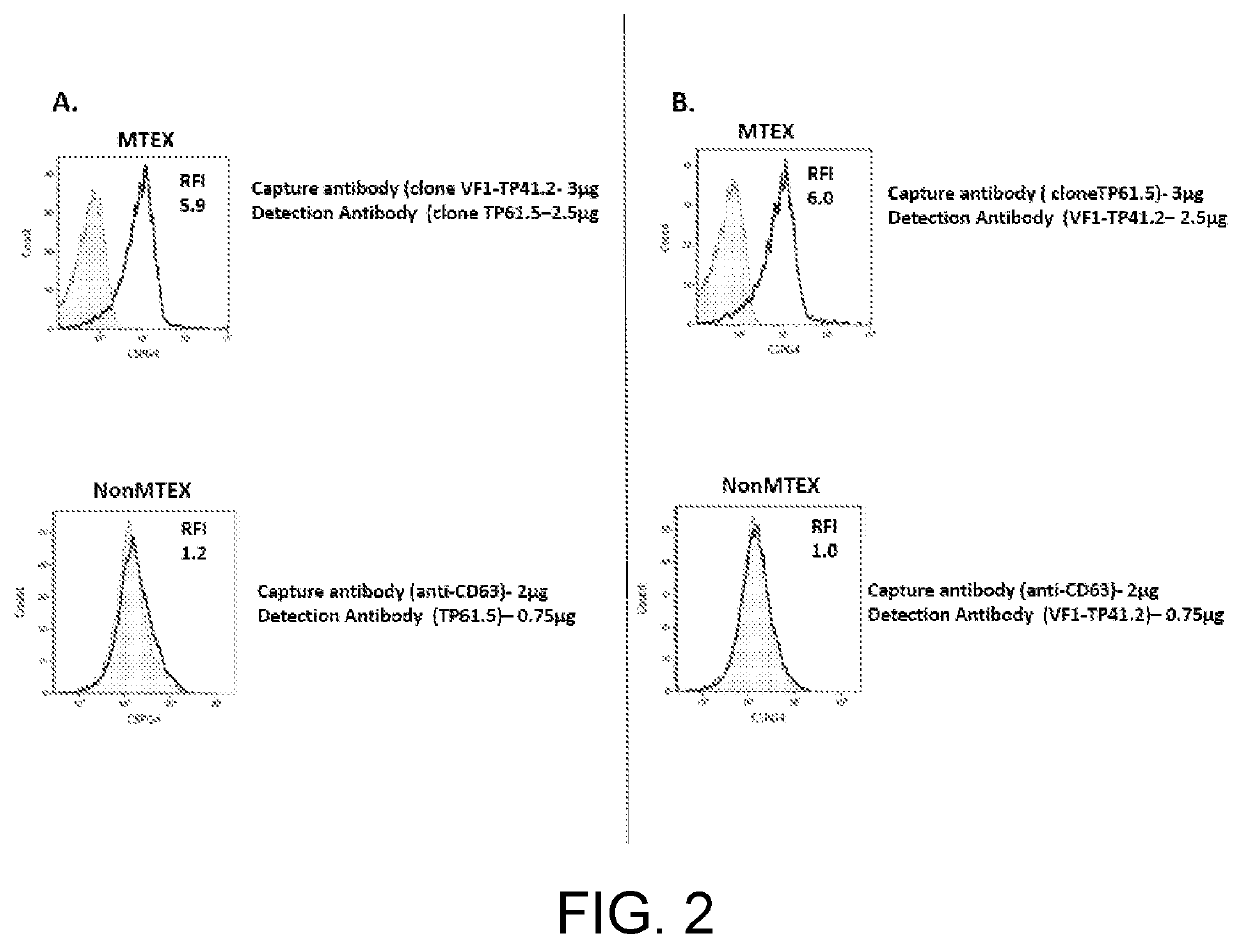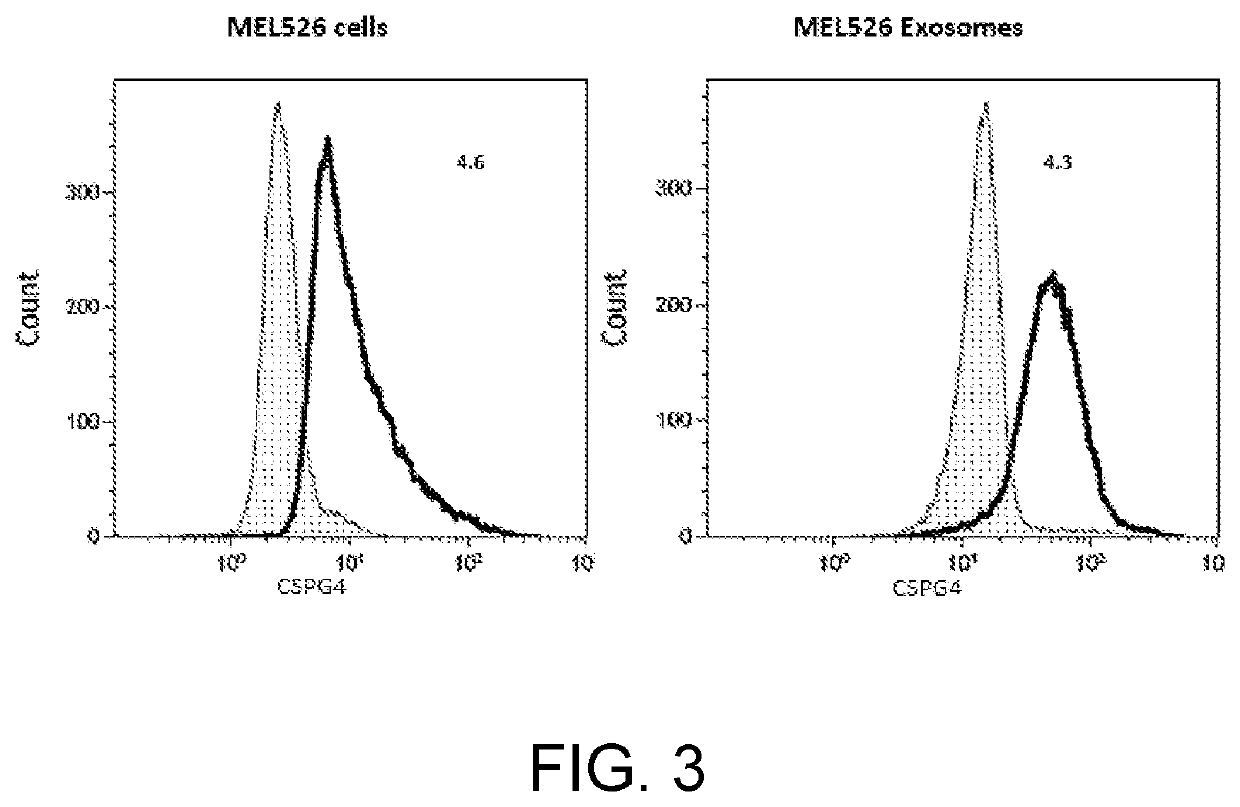Tumor cell-derived exosomes and their applications
a technology of tumor cells and exosomes, applied in the field of tumor cell-derived exosomes and their applications, can solve the problems that the use of cells to avoid recognition and destruction by the host immune system is a major obstacle to successful immunotherapy
- Summary
- Abstract
- Description
- Claims
- Application Information
AI Technical Summary
Benefits of technology
Problems solved by technology
Method used
Image
Examples
embodiment 1
[0061]2. The method of embodiment 1, wherein a finding that the material bound to the antibody, antigen-binding fragment, or ligand comprises CSPG4 identifies the cancer as likely to resist detection and / or cell death by the patient's immune system.
[0062]3. The method of embodiment 1 or 2, wherein a finding that the material bound to the antibody, antigen-binding fragment, or ligand comprises CSPG4 identifies the patient as likely to benefit from treatment with immunotherapy.
[0063]4. A method of determining whether a cancer in a patient suffering therefrom is likely to resist detection and / or cell death by the patient's immune system, the method comprising:[0064]a. contacting a sample obtained from the patient with an antibody, an antigen-binding fragment thereof, or a ligand that specifically binds CSPG4;[0065]b. isolating the antibody, antigen-binding fragment, or ligand from the sample; and[0066]c. analyzing material bound to the antibody, antigen-binding fragment, or ligand for ...
embodiment 4
[0068]5. The method of embodiment 4, wherein a finding that the material bound to the antibody, antigen-binding fragment, or ligand comprises CSPG4 identifies the patient as having one or more tumor-cell derived exosomes.
[0069]6. The method of embodiment 4 or 5, wherein a finding that the material bound to the antibody, antigen-binding fragment, or ligand comprises CSPG4 identifies the patient as likely to benefit from treatment with immunotherapy.
[0070]7. A method of determining whether a patient having cancer is likely to benefit from treatment with immunotherapy, the method comprising:[0071]a. contacting a sample obtained from the patient with an antibody, an antigen-binding fragment thereof, or a ligand that specifically binds CSPG4;[0072]b. isolating the antibody, antigen-binding fragment, or ligand from the sample; and[0073]c. analyzing material bound to the antibody, antigen-binding fragment, or ligand for the presence of CSPG4;
[0074]wherein a finding that the material bound ...
embodiment 7
[0075]8. The method of embodiment 7, wherein a finding that the material bound to the antibody, antigen-binding fragment, or ligand comprises CSPG4 identifies the patient as having one or more tumor-cell derived exosomes.
[0076]9. The method of embodiment 7 or 8, wherein a finding that the material bound to the antibody, antigen-binding fragment, or ligand comprises CSPG4 identifies the cancer as likely to resist detection and / or cell death by the patient's immune system.
[0077]10. The method of any one of embodiments 1-9, wherein, prior to contacting the sample with the antibody, antigen-binding fragment, or ligand, the sample is subjected to ultrafiltration through a filter having a pore size of about 0.2 μm.
[0078]11. The method of any one of embodiments 1-10, wherein, prior to contacting the sample with the antibody, antigen-binding fragment, or ligand, the sample is subjected to differential centrifugation.
[0079]12. The method of any one of embodiments 1-11, wherein, prior to cont...
PUM
| Property | Measurement | Unit |
|---|---|---|
| Pore size | aaaaa | aaaaa |
| Cell death | aaaaa | aaaaa |
Abstract
Description
Claims
Application Information
 Login to View More
Login to View More - R&D
- Intellectual Property
- Life Sciences
- Materials
- Tech Scout
- Unparalleled Data Quality
- Higher Quality Content
- 60% Fewer Hallucinations
Browse by: Latest US Patents, China's latest patents, Technical Efficacy Thesaurus, Application Domain, Technology Topic, Popular Technical Reports.
© 2025 PatSnap. All rights reserved.Legal|Privacy policy|Modern Slavery Act Transparency Statement|Sitemap|About US| Contact US: help@patsnap.com



